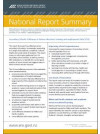This report follows on from ERO’s 2012 report on careers education, Careers Information, Advice, Guidance and Education (CIAGE) in Secondary Schools. This second report investigates how well 74 secondary schools have prepared their students for future opportunities in education, training and employment.
Methodology
In this evaluation ERO reviewed the quality of senior secondary curriculum in 74 secondary and composite schools. The information was collected as part of school education reviews during Terms 2 and 3 of 2012. These schools from across New Zealand represented a variety of deciles and sizes, ranging from schools based in main urban centres through to some in small rural settlements (see Appendix 2).
The overarching question ERO sought to answer was – “How well are secondary schools preparing their students for their future education, training and employment?” The evaluation covered the following aspects.
Table 1: The six aspects included in the scope of this evaluation
| Philosophy | The school’s overall approach to senior secondary education focussed on ALL students achieving their potential. |
| Structures and Processes | The courses, pathways and support structures for ALL students into and out of senior schooling. |
| Outcomes | The success of student pathways into and out of senior schooling, with an emphasis on priority groups. |
| Outside the school gate | Partnerships with iwi, business, tertiary providers and families. |
| Leadership | Leadership’s impact on student pathways to education, training and employment. |
| Self-review | The school’s analysis and use of data on its effectiveness in supporting students to develop career management competencies and their in-school and post-school pathways. |
These aspects are set out in more detail in the indicators ERO used to make judgements about each school’s responsiveness to their students’ future aspirations (see Appendix 1).
ERO used the indicators to make judgements about:
- How and how well do secondary schools develop courses, pathways and support structures for ALL students in the senior school (including junior students transitioning into Year 11)?
ERO reviewers also collected evidence to answer the following questions:
- What are the key strengths in each school’s approach to pathways and the curriculum?
- What are the key barriers affecting the school’s approach to pathways and the curriculum?

